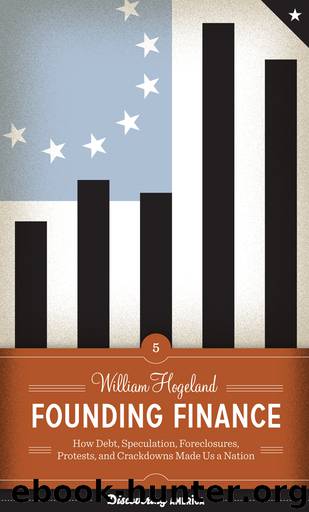Founding Finance by William Hogeland

Author:William Hogeland
Language: eng
Format: epub
Publisher: University of Texas Press
Published: 2012-11-07T05:00:00+00:00
7
IT’S HAMILTON’S AMERICA . . . WE JUST LIVE IN IT (1789–1791)
Alexander Hamilton has rightly gone down in history for his comprehensive founding plan of national finance. He intended to realize a grand, integrated vision of strong nationhood in a series of big steps, and the first step, not surprisingly, was financial. Hamilton’s efforts in the early 1790s as the nation’s first Treasury secretary brought the nationalists’ efforts of a decade earlier to a climax.
The first federal government was located temporarily in New York, Hamilton’s town, and the federal domestic debt, to whose care and feeding Morris, Hamilton, and other nationalists had devoted themselves in the 1780s, had grown to $54 million. But states had been trying to pay off their own obligations, and economic egalitarians in Pennsylvania and Massachusetts, as we’ve seen, had been demanding devaluing public bonds and equalizing public finance. When Hamilton took over, the debt was in trouble.
So in an office on Broadway, near Wall Street, Hamilton worked up an integrated plan not only to fund the domestic debt—reliably paying the bondholders, now including the officer class, their 6 percent interest—but also to assume in the federal debt all debts of the states. “Assumption,” as that idea is known, would add about $25 million to the federal debt, an astonishing proportion for a small, new, untried nation, which would now have a debt of nearly $78 million. The audacity and enthusiasm involved in that plan were characteristically Hamilton, and now he had real power. England’s debt had reached £78 million only in 1748, but with that debt, Hamilton knew, the small island nation, always strapped for cash, managed a European empire.
Assuming state debts wasn’t original with Hamilton. Morris had always hoped for federal assumption. Making all significant public investment an investment in national government would liberate the country’s commercial energy by yoking high finance to national projects. War, of course, was the original founding project. Gouverneur Morris had actually called for deliberately extending the war in order to keep the country unified, and war’s influence on grand national thinking would never go away.
But Hamilton’s vision for American nationhood was more comprehensive. He wanted a government industrial policy, too, with private-public partnership to encourage size, efficiency, and innovation, and to discourage small, scattered artisanal production, concentrating labor power behind big development. For Hamilton, war, industry, and high finance combined in great nationhood.
His goal for the domestic debt remained making reliable payments to creditors, thus inspiring confidence in federal bonds as subjects of rational investment and trade. Funding the debt would spring-feed a pool of capital, from which, if managed carefully—and accompanied by a fund dedicated to retiring it over time—the federal government could draw, and draw again, in nurturing the nation.
To that end, the government would need to exercise its taxing power and finally “open the purses of the people,” in Morris’s phrase. The first Congress had passed a genuine federal impost, but Morris had always said that a duty on foreign goods was only a beginning.
Download
This site does not store any files on its server. We only index and link to content provided by other sites. Please contact the content providers to delete copyright contents if any and email us, we'll remove relevant links or contents immediately.
| Africa | Americas |
| Arctic & Antarctica | Asia |
| Australia & Oceania | Europe |
| Middle East | Russia |
| United States | World |
| Ancient Civilizations | Military |
| Historical Study & Educational Resources |
Cat's cradle by Kurt Vonnegut(15127)
Pimp by Iceberg Slim(14266)
4 3 2 1: A Novel by Paul Auster(12245)
Underground: A Human History of the Worlds Beneath Our Feet by Will Hunt(11992)
The Radium Girls by Kate Moore(11886)
Wiseguy by Nicholas Pileggi(5626)
Perfect Rhythm by Jae(5293)
American History Stories, Volume III (Yesterday's Classics) by Pratt Mara L(5234)
The Fire Next Time by James Baldwin(5215)
Paper Towns by Green John(5057)
Pale Blue Dot by Carl Sagan(4880)
A Higher Loyalty: Truth, Lies, and Leadership by James Comey(4813)
The Mayflower and the Pilgrims' New World by Nathaniel Philbrick(4392)
The Doomsday Machine by Daniel Ellsberg(4386)
Killers of the Flower Moon: The Osage Murders and the Birth of the FBI by David Grann(4363)
The Sympathizer by Viet Thanh Nguyen(4277)
Too Much and Not the Mood by Durga Chew-Bose(4247)
The Borden Murders by Sarah Miller(4210)
Sticky Fingers by Joe Hagan(4076)
